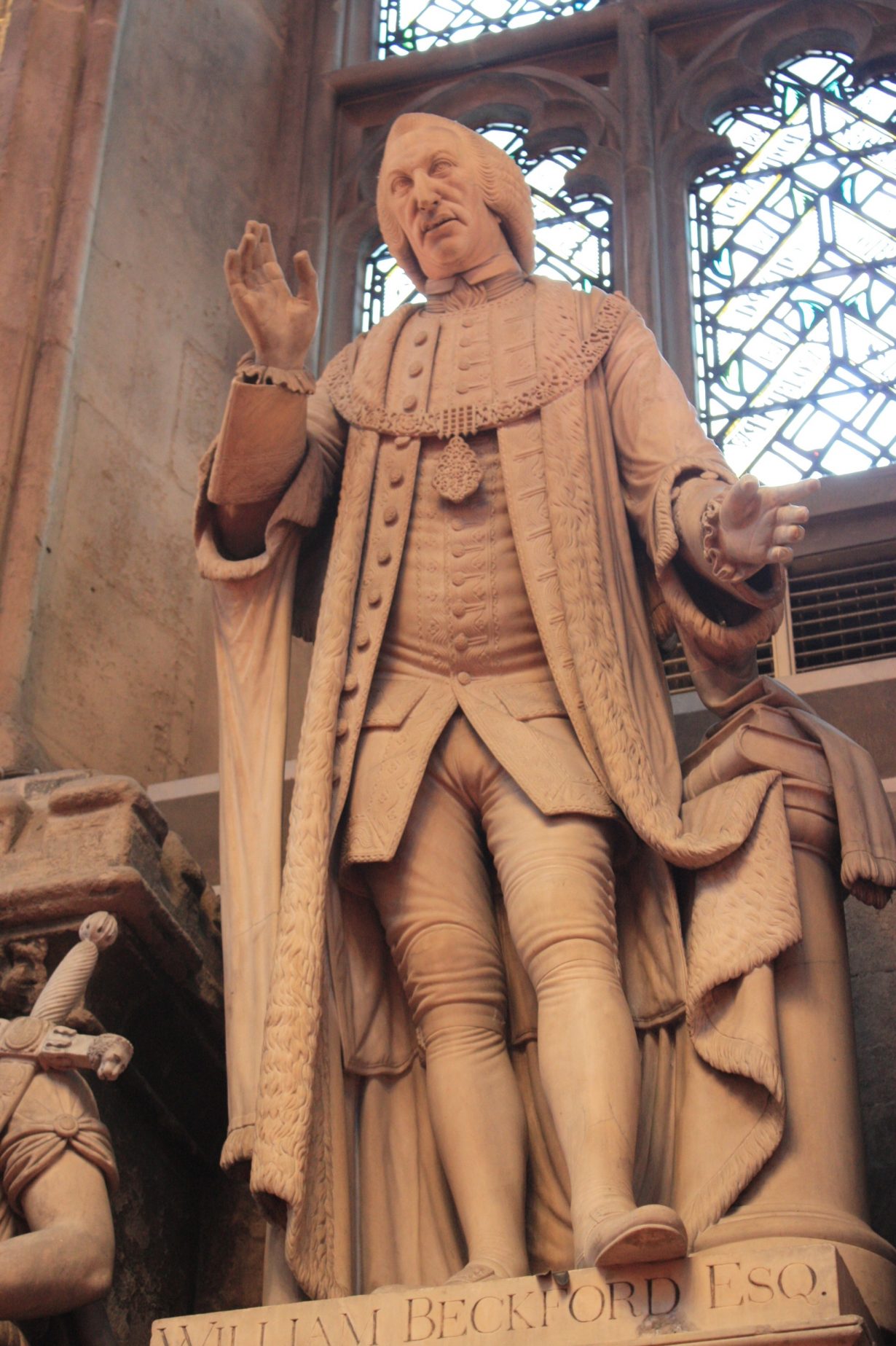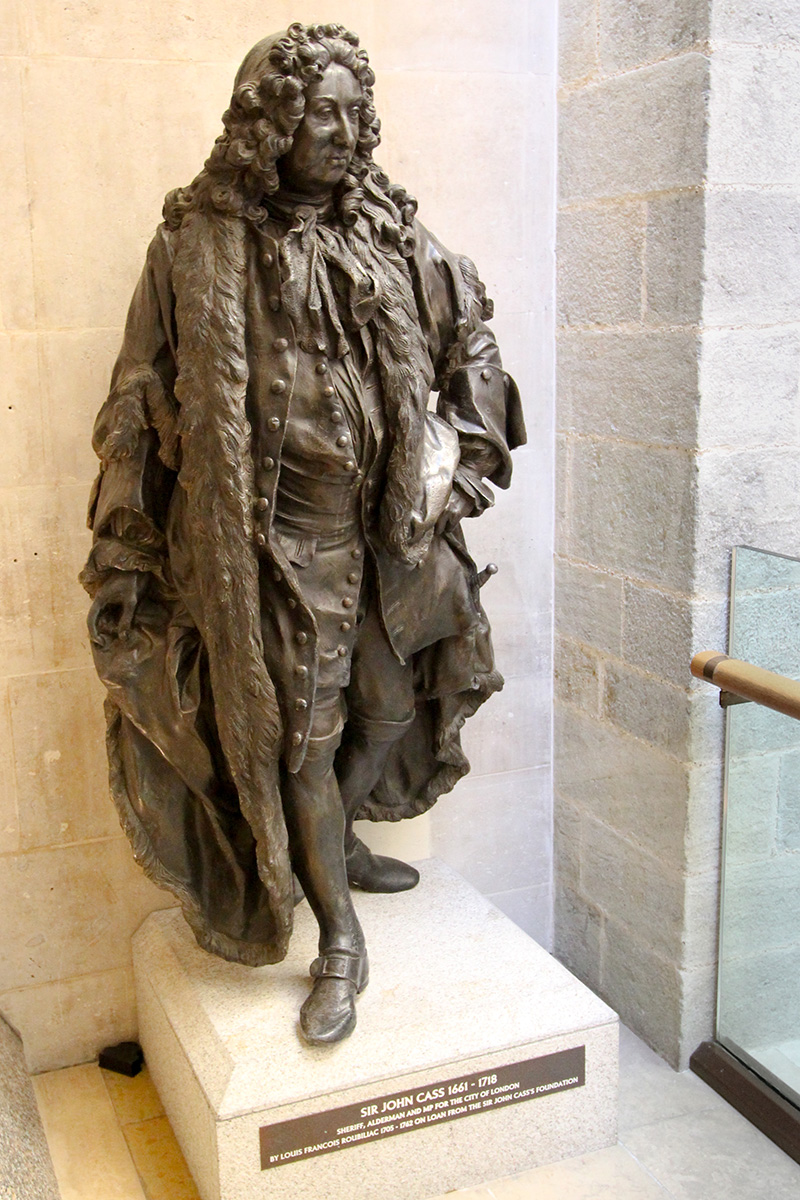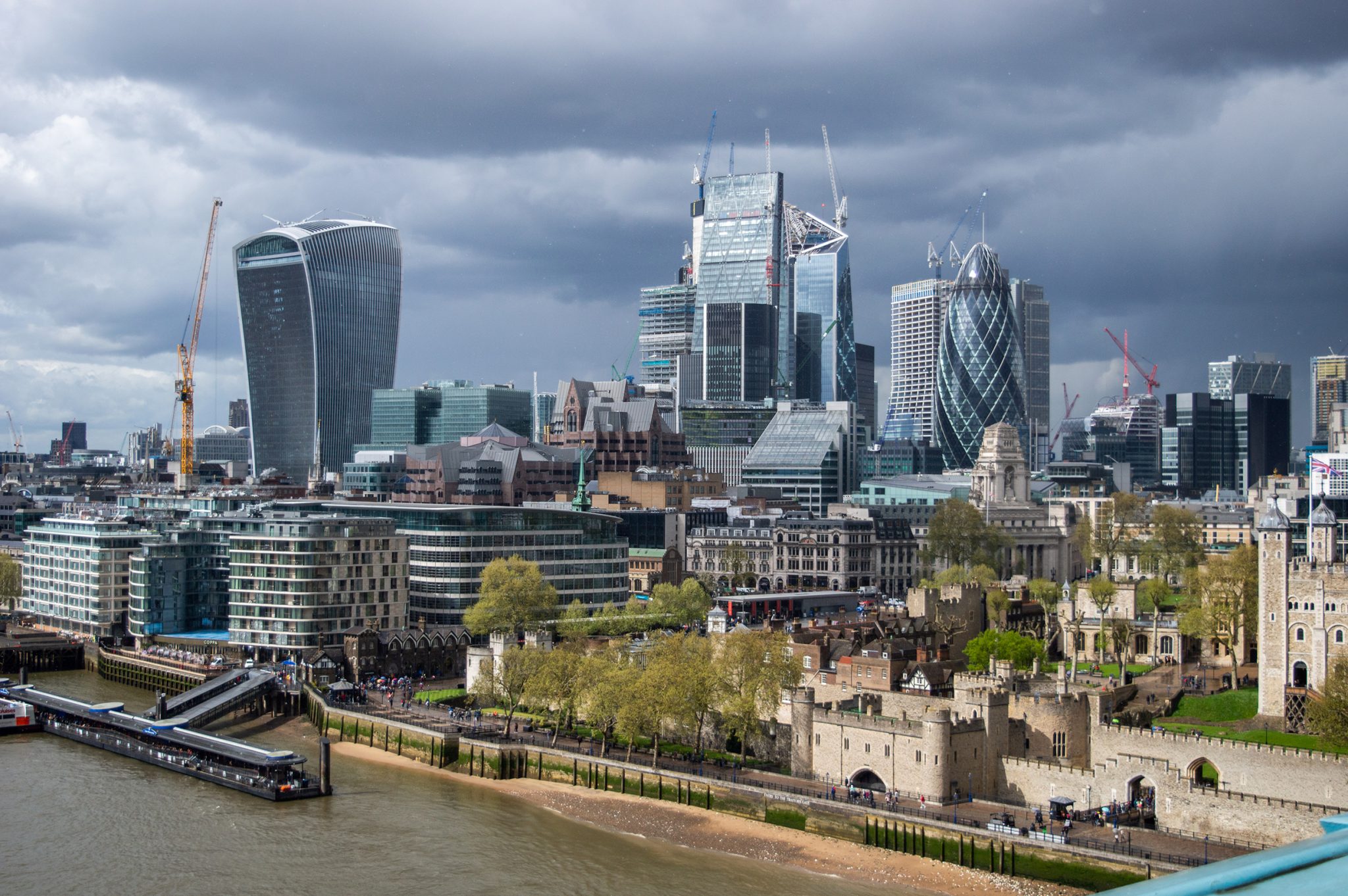Plus: a list of the problematic memorials across the City of London yet to be addressed by the City’s Taskforce On Racism
When it comes to addressing what to do with artworks and memorials connected to historic racism and attendant issues relating to colonialism, some talk up their commitment to change, but their lack of action exposes a preference for the status quo. The City of London Corporation is the local authority that covers the capital’s international financial district. Not only does the Corporation pack more problematic memorials into its famous ‘Square Mile’ than almost any other council in the UK (or, for that matter, the world), it is simultaneously a major patron of the arts.
Following the death of George Floyd in Minneapolis in May 2020, the Corporation issued a statement in support of Black Lives Matter. The insincere and performative nature of this is evident to those who know that at least two of its four signatories had attended the City’s annual celebrations of legacy projects connected to the slave-trader John Cass in recent years (a charitable foundation, a primary school and a business school named after Cass have since been renamed). The Corporation’s BLM statement was followed by an equally performative Historic Landmarks Consultation that attempted to dodge the issues raised by racist memorials rather than confront them.

‘The debate over contested heritage, within and outside the City of London, has proven to be politically divisive,’ stated a report published earlier this year by the City’s Findings and Recommendations of the Tackling Racism Taskforce. ‘Following global protests after the death of George Floyd, there was a re-examination of the suitability of certain contested pieces of heritage, namely public statues that displayed subject matters associated with slavery and other forms of racism.’ The only problematic memorials mentioned in the report are statues inside the Guildhall, the City of London’s council headquarters, of Cass (and a copy of it that was removed from nearby Jewry Street last year by the charity that owned it) and of slave-owner William Beckford. Both men had been senior City Corporation councillors.
The Cass statue in the Guildhall had been on a long-term loan and the council decided to return it to its owners. After heated debate the City Corporation voted to remove the statue of William Beckford (which it owns), but that decision has since been kicked into the long grass: the UK government’s Department for Digital, Culture, Media & Sport intervened to say the Beckford statue should stay, and the status quo holds (the UK government has subsequently changed the law to make the removal of statues less straightforward).
By far the most visible among the plethora of problematic memorials dotted around the City of London are landmark buildings Cromwell Tower and Lauderdale Tower, named after two particularly odious men. The fact that the Findings and Recommendations report emphasises statues as the prime problem and then only addresses two of them would strike most people, if they believed that the City Corporation was genuinely attempting to tackle historic racism, as odd. Experienced Corporation-watchers, however, will recognise the report as classic City spin, offering the pretence of dealing with an issue while
in practice ignoring most instances of it.

Recently a collective of Barbican Centre workers published the book Barbican Stories (2021) alleging racism at this jewel in the City Corporation’s arts crown. Institutional racism visibly rises above the Barbican Centre in the form of the landmark brutalist residential towers that dominate the skyline around it. Lauderdale Tower is named after a slave-trader (John Maitland, 2nd Earl of Lauderdale), and Cromwell Tower memorialises a mass murderer (Oliver Cromwell) who oversaw English colonial atrocities in Ireland. There are a variety of Cromwell memorials in the City of London installed by the corporation over the past 45 years or so – the most recent dates from 1999 – and, while some people who aren’t Irish or don’t identify with their Irish heritage prefer to see Cromwell as predominantly a parliamentarian and an opponent of monarchical power, there has so far been no indication the council views them as problematic.
While the City Corporation was not the only council to avoid the broader issue of racist crimes committed in the pursuit of empire when reviewing public landmarks, it can’t credibly claim ignorance of the matter, since through its livery companies it played a key role in the Plantation of Ulster. The vehicle created for the Corporation’s involvement in the colonisation of the north of Ireland was the Honourable Irish Society. Today this venture still owns the Walls of Derry, a major albeit contested European monument – the obnoxious loyalist Walker Monument that once crowned the Walls was blown up by the ira in 1973. Many current City Corporation councillors are members of the Irish Society and some play key roles within it.
By way of contrast, councillors in neighbouring Hackney have been vocal about the need to remove the statue of the slave-trader Robert Geffrye from the exterior of the Museum of the Home, which lies within their borough boundaries but not within their jurisdiction. Likewise, the Bank of England, located in the Square Mile, has been bolder too. It recently removed artworks depicting former bank grandees (a number of whom were also senior City Corporation councillors) from public display. The Daily Mail responded with fury, and in a piece titled ‘Bank of England is accused of undertaking a “bonfire of the vanities” after removing portraits linked to the slave trade’ (14 June 2021), it erroneously suggested that the former Lord Mayor of London Gilbert Heathcote, whose portrait was pulled, had not been linked to slavery.

The Mail’s claim about Heathcote exposed its ignorance of the slave trade, since it said it had failed to find anything incriminating about him on the UCL’s Legacies of British Slavery database, which focuses on plantation owners. City merchants including Heathcote bought slaves in Africa and transported them across the Atlantic, where they were sold to plantation owners. No one who has done research in this area would expect to find much about a slave merchant on the UCL database. Instead they’d look to sources such as William A. Pettigrew’s Freedom’s Debt: The Royal African Company and the Politics of the Atlantic Slave Trade, 1672–1752 (2013), which contains a wealth of information on Heathcote’s activities as a leading independent slave trader.
The City Corporation also has a political constitution unlike any other local authority in the uk. For the past 200 years the City Corporation has used its extensive financial resources – including a sovereign wealth fund that is the envy of many nations – to defend its medieval political structure and privileges, as a result of which there is an urgent need for its democratic reform. Last year the Lisvane Report, which the City Corporation commissioned into its own governance, suggested the board of the Barbican Centre should no longer be controlled by local councillors, because many are appointed who lack any relevant knowledge of the arts or their administration. The suggested change, if the City Corporation implemented it, would provide a good place to start addressing the problem of institutional racism at the Barbican Centre.
Times have changed and I don’t see why the contested heritage in the City of London can’t be properly contextualised. The current Museum of London is about to be vacated, and the City Corporation has abandoned its plans to transform the site into a Centre for Music, so why not fill the space with the council’s extensive collection of contested heritage, which might very well form the basis of an institution dedicated to exposing the horrors of slavery and colonialism?
Some of the problematic memorials in the City of London and the individuals and organisations they celebrate not yet addressed by the City’s Taskforce On Racism:
Elizabeth I sponsored the slave trading voyages of John Hawkins.
- Statue of Elizabeth I, St Dunstan-in-the-West, Fleet Street, London EC4A 2HR
- Statue of Elizabeth I, Maughan Library, King’s College, Chancery Lane, London WC2A 1LR
Oliver Cromwell oversaw the brutal seventeenth-century conquest of Ireland, England’s first colony.
- Bust of Oliver Cromwell in external wall recess near entrance of Guildhall Art Gallery, Guildhall Yard, London EC2V 5AE
- Cromwell Tower, Cromwell Place, Barbican Estate, London EC2Y 8DD
- Cromwell Place, Barbican Estate, London EC2Y 8DD (courtyard at bottom of Cromwell Tower)
- Cromwell Highwalk, Barbican Estate, London EC2Y 8DD (pedestrian walkway)
Charles II granted a charter to the Company of Royal Adventurers of England which included a monopoly on slave trading.
- Statue of Charles II, Temple Bar Memorial, Fleet Street, London EC4Y 1BD (statue in niche)
- King Street, London EC2V 8BB (named for Charles II)
- Latin inscription to Charles II on a south panel at the base of The Monument, Fish Street Hill, London EC3R 8AH. There is also a Latin inscription for the slaver Lord Mayors of London Richard Ford, George Waterman and Robert Vyner on an eastern panel above the door of The Monument
Queen Anne secured an exclusive thirty year contract to provide African slaves to the Spanish West Indies which was sold for £7.5 million by the British government to the South Sea Company. Anne owned 20% of the South Sea Company’s stock.
- Statue of Queen Anne, St Paul’s Churchyard, London EC4M 8AL
- Statue of Queen Anne, Maughan Library, King’s College, Chancery Lane, London WC2A 1LR
Christopher Wren invested in the slave trading Royal Africa Company.
- Bust of Christopher Wren in external wall recess near entrance of Guildhall Art Gallery, Guildhall Yard, London EC2V 5AE
Samuel Pepys invested in the slave trading Royal Africa Company and was a slave trade enabler through his job at the Naval Office.
- Bust of Samuel Pepys in external wall recess near entrance of Guildhall Art Gallery, Guildhall Yard, London EC2V 5AE
- Bust of Samuel Pepys, Seething Lane Gardens, Seething Lane, London EC3N 4AT
- Plaque marking the former site of the Naval Office where Samuel Pepys worked, Seething Lane Gardens, Seething Lane, London EC3N 4AT
- Engraved pavements with images relating to the life of Samuel Pepys, Seething Lane Gardens, Seething Lane, London EC3N 4AT
- Pepys Street, London EC3N 2NU
- Plaque marking the former site of the house in which Samuel Pepys was born, Salisbury Court, London EC4 8AA
- Stone plaque marking where Pepys made his way into church gallery on internal wall and wooden notice board mentioning Pepys outside, St Olave’s Church, 8 Hart Street, London EC3R 7NB
- Plaque containing a page of Pepys’s diary dated 25th September 1660, on wall of Globe View, 10 High Timber Street, London EC4V 3PN (Stew Lane side)
- Samuel Pepys, Stew Lane, 48 Upper Thames Street, London, EC4V 3PT. (Shepherd Neame pub)
John Maitland, 1st Duke and 2nd Earl of Lauderdale played a key role in the establishment of the slave trading Royal African Company.
- Lauderdale Tower, Lauderdale Place, Barbican Estate, London, EC2Y 8EN
- Lauderdale Place, Barbican Estate, London, EC2Y 8EN (courtyard at bottom of Lauderdale Tower)
Arthur Wellesley, 1st Duke of Wellington was a colonial adventurer in India and as prime minister oversaw Britain’s brutal colonial policy around the world.
- Statue of Arthur Wellesley, 1st Duke of Wellington, in front of the Royal Exchange, Cornhill, London EC3V 3LR
- The Wellington Monument in St Paul’s Cathedral, St. Paul’s Churchyard, London EC4M 8AD
Admiral Arthur Phillip was the first colonial governor of New South Wales, Australia.
- Memorial to Admiral Arthur Phillip outside garden west of 25 Cannon Street, London EC4M 5TA (Watling Street side)
Captain John Smith played a key role in the establishment of the colony at Jamestown, Virginia,
- Statue of Captain John Smith St Mary-le-Bow Churchyard, Cheapside, London, EC4M 9DQ
John Scott, 1st Earl of Eldon opposed both the abolition of the slave trade and Catholic emancipation.
- Eldon Street, London, EC2M 7LS
- Eldon House, Eldon Street, London, EC2M 7LS (office building)
Sir John Frederick was a member of the Committee of the East India Company and died well before this organisation’s last known slave trading voyage which took place in 1765.
- Fredericks Place, London, EC2R 8AB
Sir James Smyth was a director of the slave trading Royal African Company.
- Heraldic window memorialising Sir James Smyth, Lord Mayor of London, in the Church of St. Botolph without Aldgate, Aldgate High St, London EC3N 1AB
Sir Robert Clayton was a director of the slave trading Royal African Company and the governor of the colonial Irish Society 1692–1706.
- Portrait of Sir Robert Clayton, Lord Mayor of London, by John Riley in the Guildhall Art Gallery, Guildhall Yard, London EC2V 5AE. This gallery houses the City of London’s municipal art collection
Sir William Prichard was a director of the slave trading Royal African Company and a governor of the colonial Irish Society.
- Portrait of Sir William Prichard, Lord Mayor of London, copy of a painting by Godfrey Kneller, in the St Bartholomew’s Hospital Museum and Archive, North Wing, St Bartholomew’s Hospital, West Smithfield, London EC1A 7BE
Sir William Gore was connected to the slave trade via a directorship of the East India Company. He may have further connections to the slave trade but references to this in some historical sources appear to confuse him with his son who had the same name as his father, so further archival work is required on the matter.
- Portrait of Sir William Gore, Lord Mayor of London, by unknown artist in the Guildhall Art Gallery, Guildhall Yard, London EC2V 5AE
William Dockwra was an independent slave trader who tried to circumvent the Royal Africa Company’s transatlantic monopoly on this inhuman traffic.
- Blue plaque commemoration of William Dockwra for creating the first Penny Post in London in 1680 in the City’s Lime Street
East India Company which among many other types of commerce was involved in the slave trade.
- India Street, London EC3N 2HS
- Rangoon Street, London EC3N 2HT
- East India Arms, 67 Fenchurch Street, London EC3M 4BR (Shepherd Neame pub)
Lloyd’s of London insured slaves and slave ships.
- Blue plaque marking the former site of the Lloyd’s Coffee House (where this insurance operation began), 15 Lombard Street, London, England, EC3V 9AN
Lloyd’s Register, like Lloyds of London (see above), began informally in the coffee house owned by Edward Lloyd. It was another of the enablers necessary for the English slave trade to grow and operate on a genocidal scale.
- Lloyd’s Avenue, London EC3N 3AE (named for the headquarters of Lloyd’s Register which was located there)
Jan Van Ost sculpture in Inner Temple Gardens on the west side of the City is a racist caricature of a slave boy holding up a sundial. In the wake of BLM protests last year, the National Trust removed a very similar sculpture from a property it runs at Dunham Massey, Cheshire, WA14 4SJ.
Although the Sir John Cass’s Foundation Primary School, St James’ Passage, Duke’s Place, London EC3A 5DE, has been renamed the Aldgate School, it still contains the 1696 racist painted panels depicting an idealised colonial plantation by Robin Robertson. Senior City Corporation councillors were often photographed in front of these problematic images when acting as the star turn at the annual celebration of the slaver John Cass which continued until last year.
Livery Companies were originally the craft guilds of various city trades but since the eighteenth century have mostly functioned as exclusive ‘gentlemen’s’ clubs. Most City Corporation councillors belong to a livery company and even those liverymen who haven’t been elected to municipal office are allowed ceremonial votes on the election of top local authority officials such as the Lord Mayor and Sheriffs. When it suits the City Corporation, it claims the livery companies are independent of the council, its rhetoric on this score is disingenuous. There are 40 odd livery company halls dotted around the City of London and a proper inventory of the items of contested heritage they contain has yet to be made. It is probable that what follows is only a small proportion of the contested heritage to be found among livery ‘treasures’.
- Ironmongers’ Hall, Shaftesbury Place, Aldersgate Street, London EC2Y 8AA contains a portrait of the slave trader Robert Geffrye and a different statue of slave owner William Beckford to the one in the City of London’s council HQ the Guildhall
- Skinners’ Hall, 8 Dowgate Hill, London EC4R 2SP, houses Frank Brangwyn’s painted panels in its Banqueting Hall including the
- Drapers’ Hall, Throgmorton Avenue, London EC2N 2DQ contains a stained glass window with the coats of arms of the slaver Francis Drake, colonial butcher Walter Raleigh and anti-abolitionist Horatio Nelson
- Vintners’ Hall, 68 Upper Thames St, London EC4V 3BG displays the coat of arms of the slaver Sir Thomas Bludworth
- Carpenters’ Hall, 3 London Wall, London EC2M 5SY contains a stained glass window commemorating notorious slave trader Sir John Cass
- Haberdashers’ Hall, 18 West Smithfield, London EC1A 9HQ, contains at least one and probably multiple memorials to slave trade investor Robert Aske
There are an enormous number of problematic memorials in St Paul’s Cathedral, too many to list but including a bust of first Canadian prime minister John A. Macdonald, one of the architects of the racist residential school system.
The various art works the Bank of England has removed from public display aren’t included here. Since they have been dealt with by their owner there is no need for the City Corporation to address these particular items that were – and probably still are – housed within its local authority boundaries. This list is very far from being definitive.
From the October 2021 issue of ArtReview
